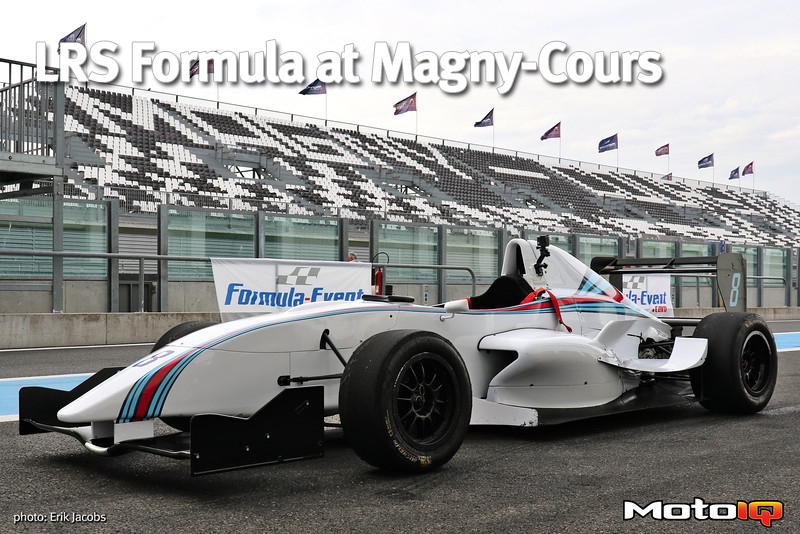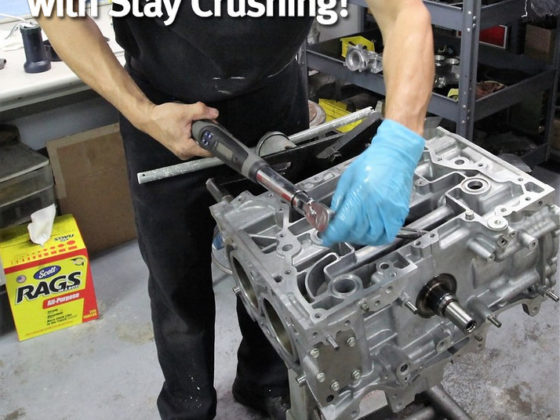,
 Here we see the front four-piston caliper inside of the 8”x13” OZ wheel, wrapped by a 20/54-13 Michelin slick — also a spec tire for the series. Other countries use different tire manufacturers.
Here we see the front four-piston caliper inside of the 8”x13” OZ wheel, wrapped by a 20/54-13 Michelin slick — also a spec tire for the series. Other countries use different tire manufacturers. The rear also uses a four-piston caliper, this time inside of a 10×13 OZ wheel, wrapped in a 24/57-13 Michelin slick.
The rear also uses a four-piston caliper, this time inside of a 10×13 OZ wheel, wrapped in a 24/57-13 Michelin slick.The brakes on this car are outstanding. Between the aerodynamic grip effects at speed and the full-race Ferodo pads, the Renault is capable of 125 MPH to zero in 4.6 seconds. If you take some time to watch my video footage, you’ll note that about 2/3 of the way through my final session I was red flagged and pulled into the pits. Apparently I was driving too fast and not braking hard enough! I went back out and promptly tried to find where the wheels would lock up (I succeeded), and easily picked up a few more seconds on track with my new-found late braking. Coming into Adelaide (turn 5) towards the top of 6th gear and waiting until the 80 meter mark to slam on the stoppers and start banging down through the gears is a little hairy, but a ton of fun.
 Here’s me being a nerd and posing.
Here’s me being a nerd and posing.Overall the car is an outstanding and fun package. So much so that we actually looked into what it would cost to own and run something similar. To my surprise, for 2016 the SCCA debuted an FIA-certified Formula 4 championship that uses a Honda-powered formula chassis that meets a $45,000 price cap. Not too shabby, considering what it costs to build a reasonably well-prepared sedan.
 Here Ainsley is getting ready to go out.
Here Ainsley is getting ready to go out.We were both driving in the same run groups, which was a little annoying. It would have been nice to be able to see each other drive and film one another, but it was also kind of refreshing to be able to chase each other on track at the same time. I guess we would have been happy either way. It’s hard to be sad when you’re thrashing someone else’s car on a race track on your vacation. 😉
 This is a photo of when I got pulled off track for my “talking to” about braking harder.
This is a photo of when I got pulled off track for my “talking to” about braking harder. LRS always had someone on hand to help you get into and out of your vehicle, and almost everyone in the pits was also one of the mechanics. If anything went wrong, someone was on hand to help make it right. Or just to tell you to stop driving like a bonehead.
LRS always had someone on hand to help you get into and out of your vehicle, and almost everyone in the pits was also one of the mechanics. If anything went wrong, someone was on hand to help make it right. Or just to tell you to stop driving like a bonehead.Despite my faux pas, the car and I survived unscathed. And, amazingly, there were no less than two other run groups pounding on the same exact cars. In theory my #8 car had 3 drivers and 4 sessions per driver, totalling twelve (!) 20-minute sessions, or a grand total of 240 minutes or four HOURS of track time. Never a hiccup, all day. That’s pretty impressive reliability.



